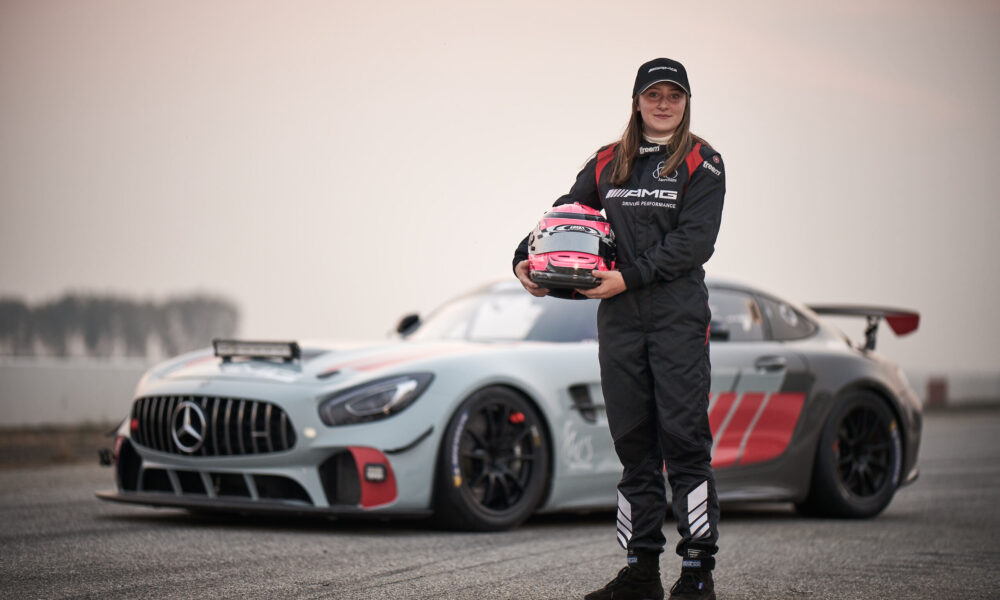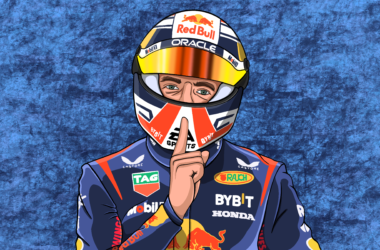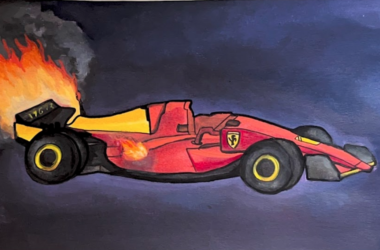I fell in love with the sport of Formula One (F1) in 2020 after watching “Senna”, a documentary depicting the life of the famous Brazilian Formula 1 driver, Ayrton Senna. Three seasons of “Drive to Survive” later, I was hooked.
After watching several seasons of driver lineups consisting completely of men, discovering that F1 was not a men’s-only sport came as a shock. In my budding F1 fandom, I was yet to see any women on the racetrack nor was I aware of any women drivers in the sport’s history. I learned—only through individual research—that five women have attempted to qualify for a Formula 1 Grand Prix: Maria Teresa de Filippis, Lella Lombardi, Divina Galica, Desiré Wilson, and Giovanna Amati. Out of these five women, only Lombardi and de Filippis qualified for a race, and only Lombardi scored points.
Thirty years have passed since a woman last attempted to qualify for a Grand Prix. Since then, F1 has exclusively been a boys club. Unsurprisingly, this male-dominated environment does not exist only on the tracks; it extends into the management of the teams as well.
A 2021 study by ESPN examining the number of women working within F1 revealed the severe lack of gender parity in the sport. Mercedes’ core race team is comprised of 65 people—four of whom are women. Five women are part of the 66-person race team for McLaren, and no women work for the Alpha Tauri team.
Across gender, race, class, and ability, F1 is an inherently exclusive sport. With only 10 teams each with two drivers, only 20 drivers are lucky enough to compete each year. Furthermore, the exorbitant cost to succeed in F1 creates a major financial barrier to gain entry into the sport, let alone to train and access the equipment required to excel. Often, teams will only choose to work with drivers that have ample sponsorship funding as it provides them with more capital for car and team development. The majority of successful F1 drivers are able to accomplish this through relationships with sponsors and teams and for women, the sponsorship opportunities are few and far between.
The obstacle of finding sponsorships is even harder to overcome given the small number of women in karting––a four-wheel motorsport practiced by most racers when they are children to gain experience and build up the necessary reflexes to compete. In Britain, the under-16 karting license split is 14 boys to every 1 girl, putting over 93 per cent of licences in the hands of boys. The lack of representation for women in the categories under F1, such as Formula 4, Formula 3, or Formula 2, leaves many fans concerned about the high barriers to entry for women. F1 fan, Victor Henry, U3 Science, expressed his concern about the lack of opportunities for women in the racing world.
“I think one day it could definitely be possible to see a woman race for an F1 team,” Henry told The McGill Tribune. “However, with the way things are in place today in F1, it makes it very hard for women to achieve excellence in this domain. In this regard, as long as the world of car racing does not change in a way that offers women equal opportunities, I don’t think we could see a female Formula 1 driver.”
Strides toward equal opportunities could be as simple as changing the car design to accommodate smaller physiques. Though performing well in the lower ranks is key to accessing F1, the car design of these feeder categories is often the same for all drivers in an effort to reduce costs. Tatiana Calderón, a Colombian racer in the 2019 Formula 2, explained that due to her height, weight, and foot size, she often struggles to perform to the best of her abilities as the car was made for men. The size of the braking pedal, for example, is made for bigger feet, forcing Calderón to press down on the brake with just her toes, losing strength and power. The size of the steering wheel is also made for bigger hands, which leads Calderón to suffer from heavy cramps following a racing weekend.
Despite facing difficulties in terms of accessibility, the dream of racing professionally is not out of the question for young drivers like Nicole Havrda. The 16-year-old Canadian racer is currently competing in the Indian Racing League as part of the Chennai Turbo Riders and helping pave the way for young women in motorsport.
“I 100 per cent believe that in the future there will be a female driver racing, and I am working my butt off to achieve that myself,” Havrda said in an interview with the Tribune.
For women to gain access to that prized seat, there needs to be more initiative taken in the realm of motorsport to promote the involvement of women as both drivers and contributors to the racing world.
“More large companies need to step up and help young and upcoming drivers make their way up the racing ladder,” explained Havrda. “It is hard financially for most drivers to be able to make it far [….] I was recently a part of the She’s Mercedes program [and] the campaign is helping create a path in motorsports for women like me.”
Other initiatives to increase the number of women in motorsport have also recently kicked off. Alpine has launched a Rac(H)er program to encourage the presence of women in the sport. The W series, a women-only competition without entry fees, seeks to eliminate the financial barriers that prevent many from racing. The recently-launched F1 Academy also aims to support women in navigating the different series of the sport. However, to many fans, these measures are only surface-level. In an interview with the Tribune, McGill alumna (BA ’22) Erin Smith expressed her concern that these newfound initiatives are simply not enough.
“I […] think that F1 is doing basically next-to-nothing in terms of getting women more involved,” Smith told the Tribune.“I think F1 is almost kind of happy with this current status quo where women are in a completely different category when they are perfectly able, eligible, and willing to participate in Formula 1 and not W series [….] There should be better programs.”
The truth is that women have every capacity needed to drive at the same level as their male counterparts. Jamie Chadwick, a British driver who will be racing in the Indy NXT 2023 for Andretti Autosport, has won the W series three times, each by a large margin and remains unable to score a seat in the Formula circuit.
F1 must do more to rectify the systemic exclusion of women within motorsport. A woman driver winning the highly competitive W series three years in a row should be able to secure at least a Formula 3 seat. F1’s initiatives to promote women racing can only work if the system is changed from within and women are seen as integral to the sport. Encouraging women to become racing drivers through programs yet failing to provide them with opportunities once they reach the higher stages of competition reveals the true colours of F1 leadership. There is no real desire for gender equity among those who hold power within the sport—just performative action.









Well of course young girls have got to want to go racing karts at age 10, 11, or 12, or younger, but only a few do. But most young boys do. Girls do girl things and boys do boy things. That’s why there are fewer women than men racing cars.
PK.